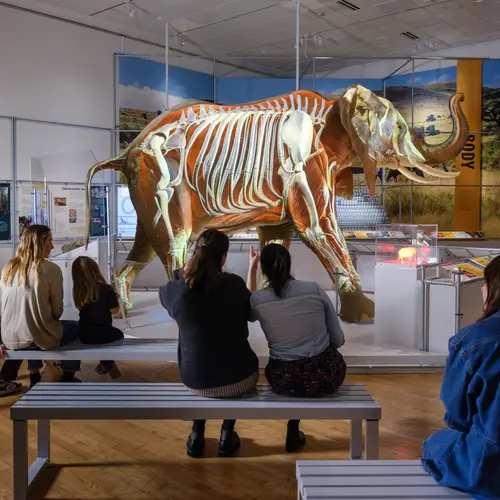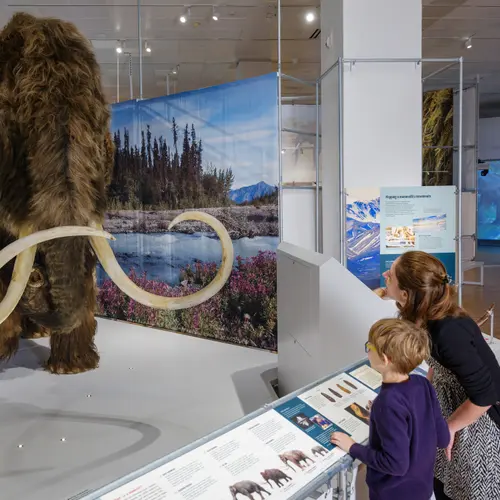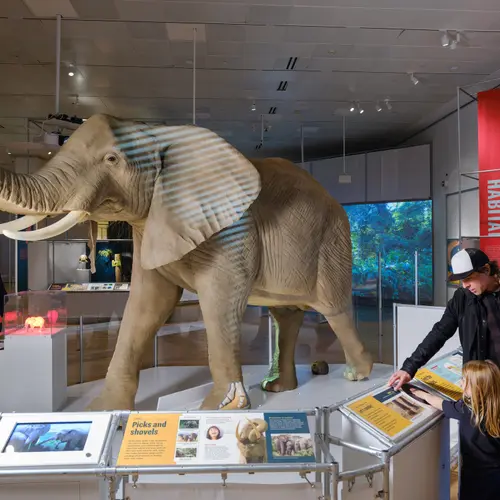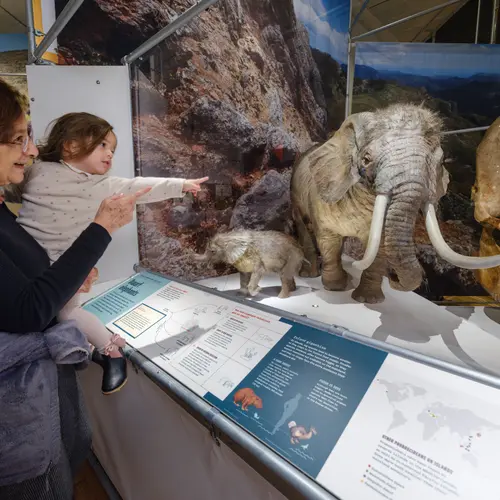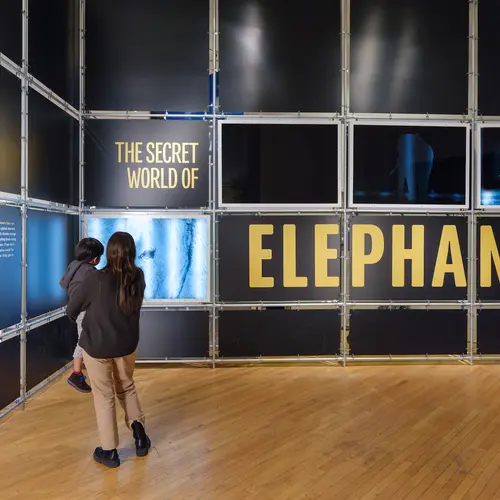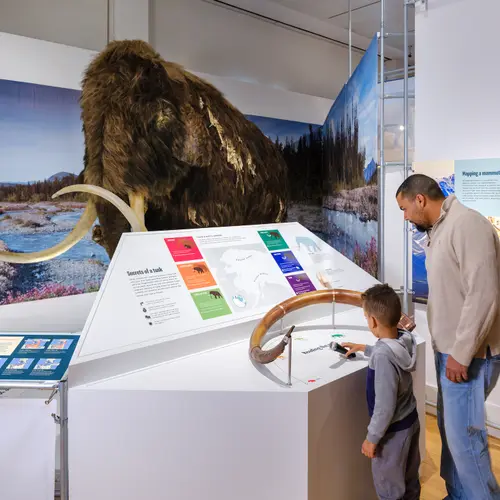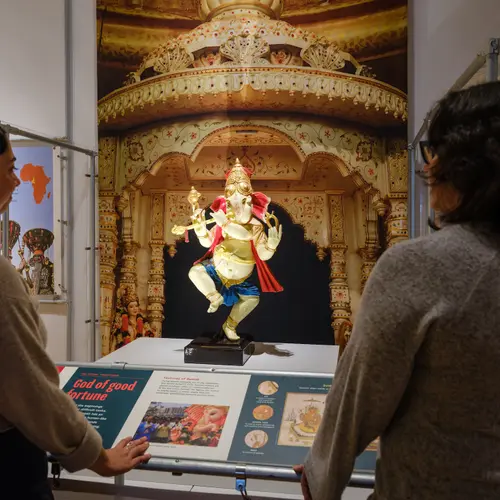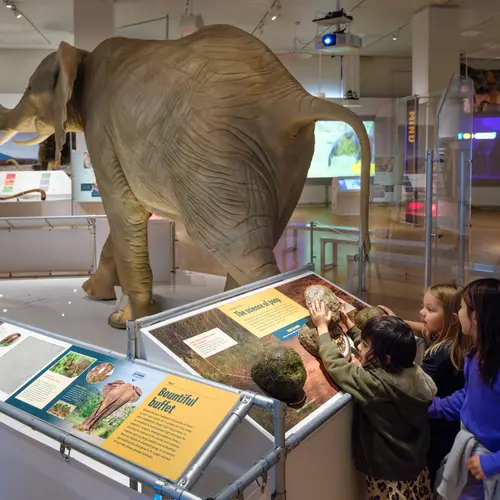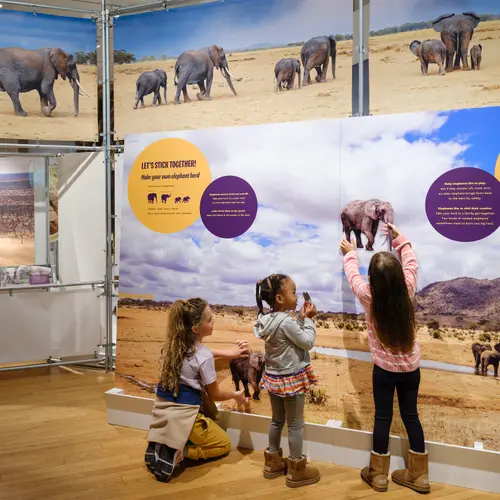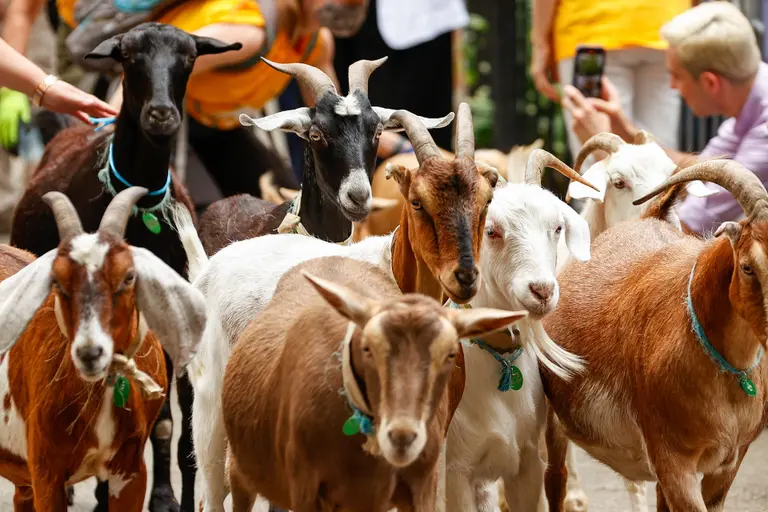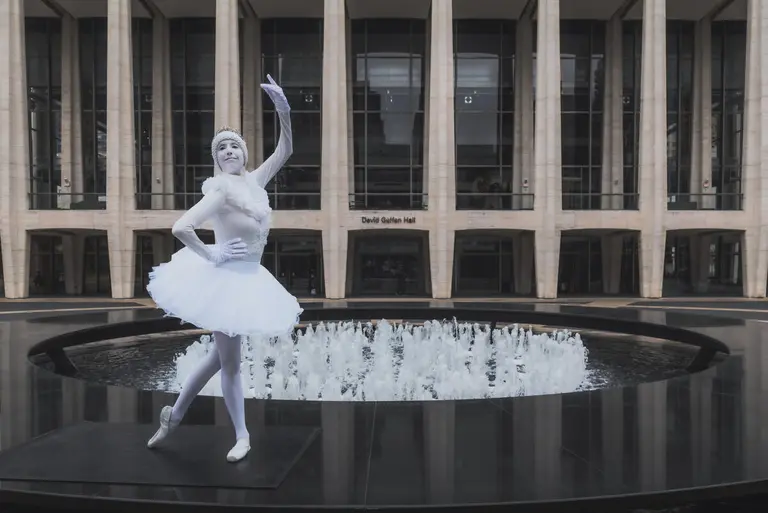Museum of Natural History explores the ‘secret world’ of elephants in new exhibit
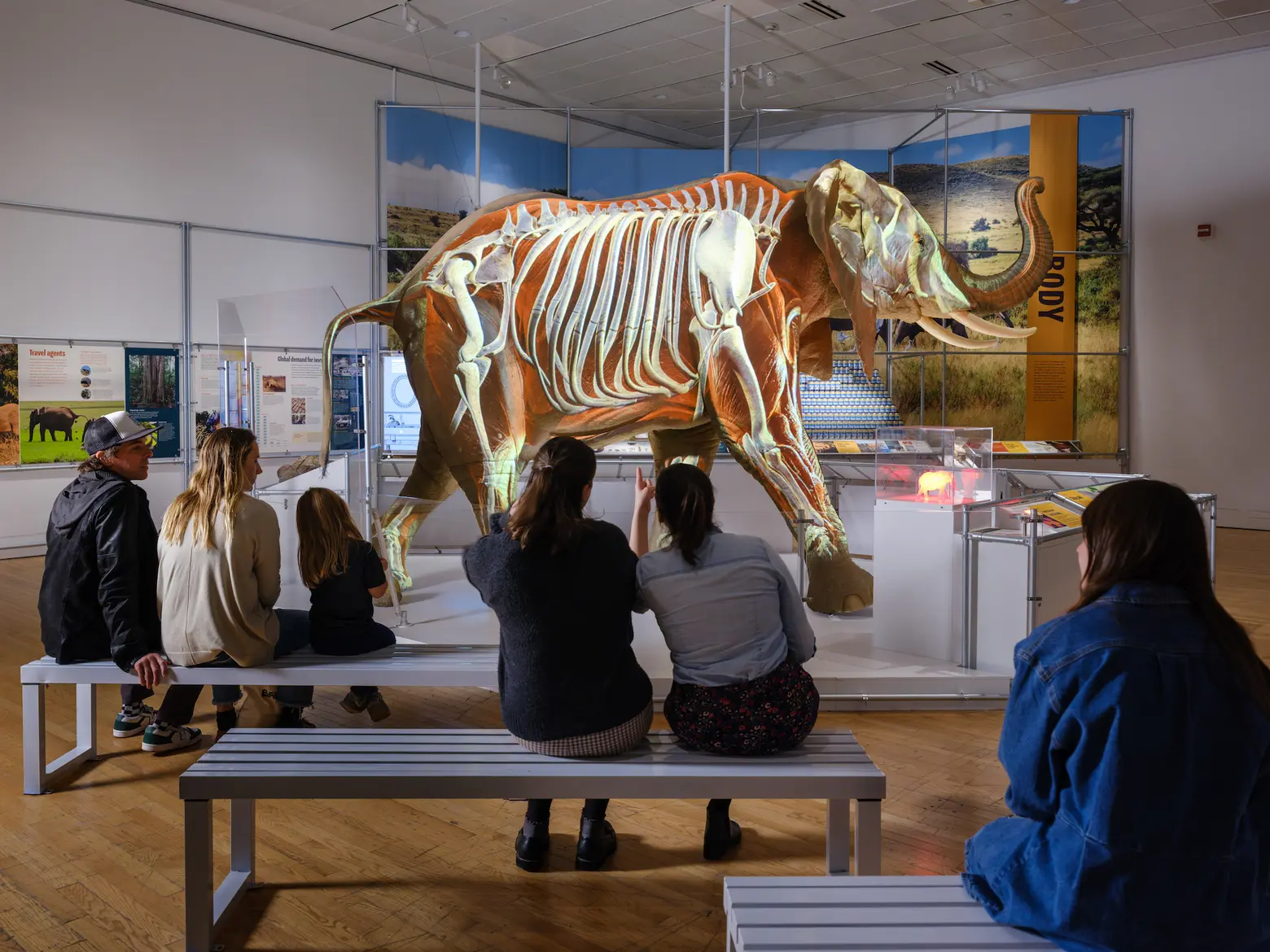
The exhibition features a life-size model of an African elephant—the largest living land animal. All photos courtesy of Alvaro Keding / © AMNH
A new exhibition at the American Museum of Natural History dives into the astounding 60-million-year history of elephants. Now open, the exhibit, known as “The Secret World of Elephants,” explores new science about modern and ancient elephant relatives, delves into the species’ extraordinary minds and senses, explains their vital importance to the health of their ecosystems, and shares efforts that are currently underway to ensure their survival. The exhibition is located on the fourth floor of the museum in the LeFrak Family Gallery.
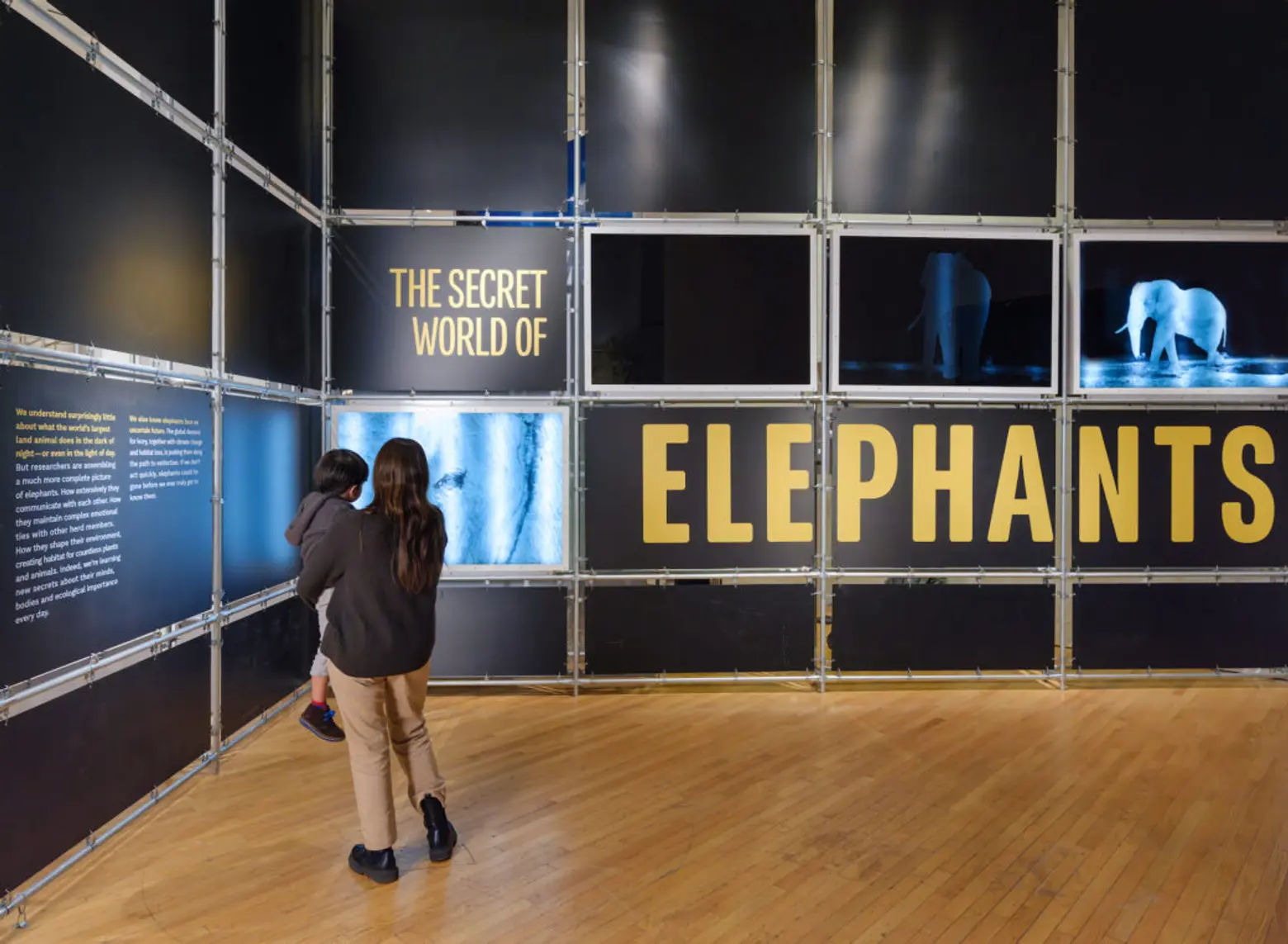

Throughout “The Secret World of Elephants,” visitors are introduced to the elephant family tree, which reveals information that might be shocking to some: not all of its relatives are hulking mammals with thick skin like hippos and rhinos, but instead include aquatic sea cows and rabbit-sized hyraxes.
The exhibit features life-size models of elephants and their relatives, including an accurate representation of a woolly mammoth shedding its fur. Museum visitors can view fossils and casts, engage in interactive displays, and watch videos that tell the story of these towering animals.
“Elephants are the world’s largest land animal, but we understand surprisingly little about them,” Ross MacPhee, curator of the exhibit and curator emeritus in the museum’s Department of Mammalogy. “Researchers are working toward assembling a much more complete picture of elephants and we’re learning new secrets about their minds, bodies, and ecological importance every day.”
“We also know elephants face an uncertain future. The global demand for ivory, along with climate change and habitat loss, are pushing them along the path to extinction. If we don’t act quickly, elephants could be gone before we ever truly get to know them.”
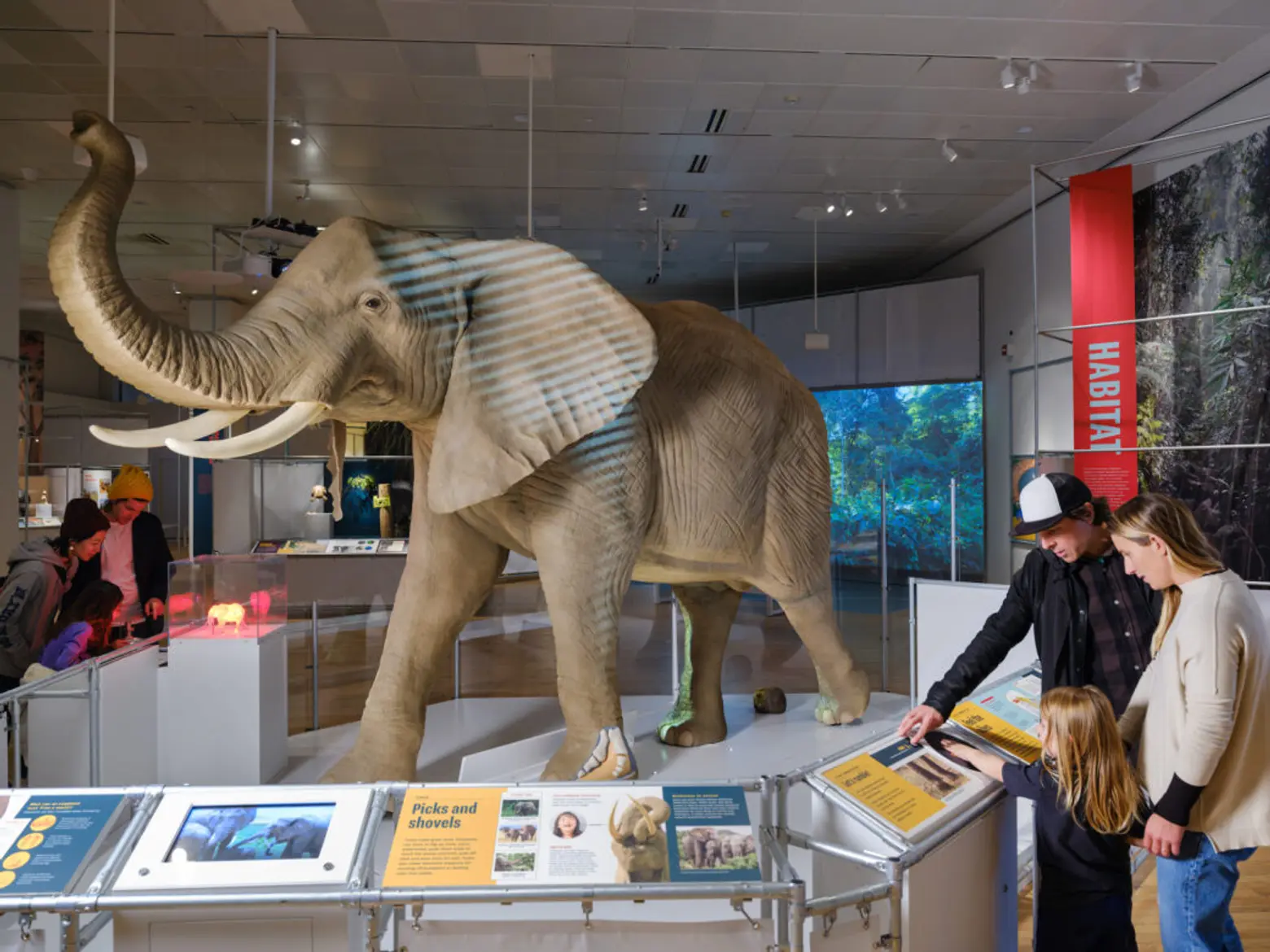
Visitors will learn about the animal species through a variety of contexts; including their bodies, minds, habitats, and relationships with humans. In exploring the science behind elephants’ bodies, guests can interact with a station that allows them to feel the extremely low sound waves known as infrasound that elephants use to send messages through the ground and the feet of other elephants.
A life-sized model of an African elephant with a video projection on one side of its body allows spectators to see the massive skeleton of the animal, get an inside look at how it processes the 300 to 500 pounds of food it eats every day, and learn about its gestation process, which can last up to almost two years, longer than any other living mammal.
Another part of the exhibit allows visitors to touch two teeth, one from a mammoth and another from a mastodon-like species, providing valuable insight into the ways the species chewed food.
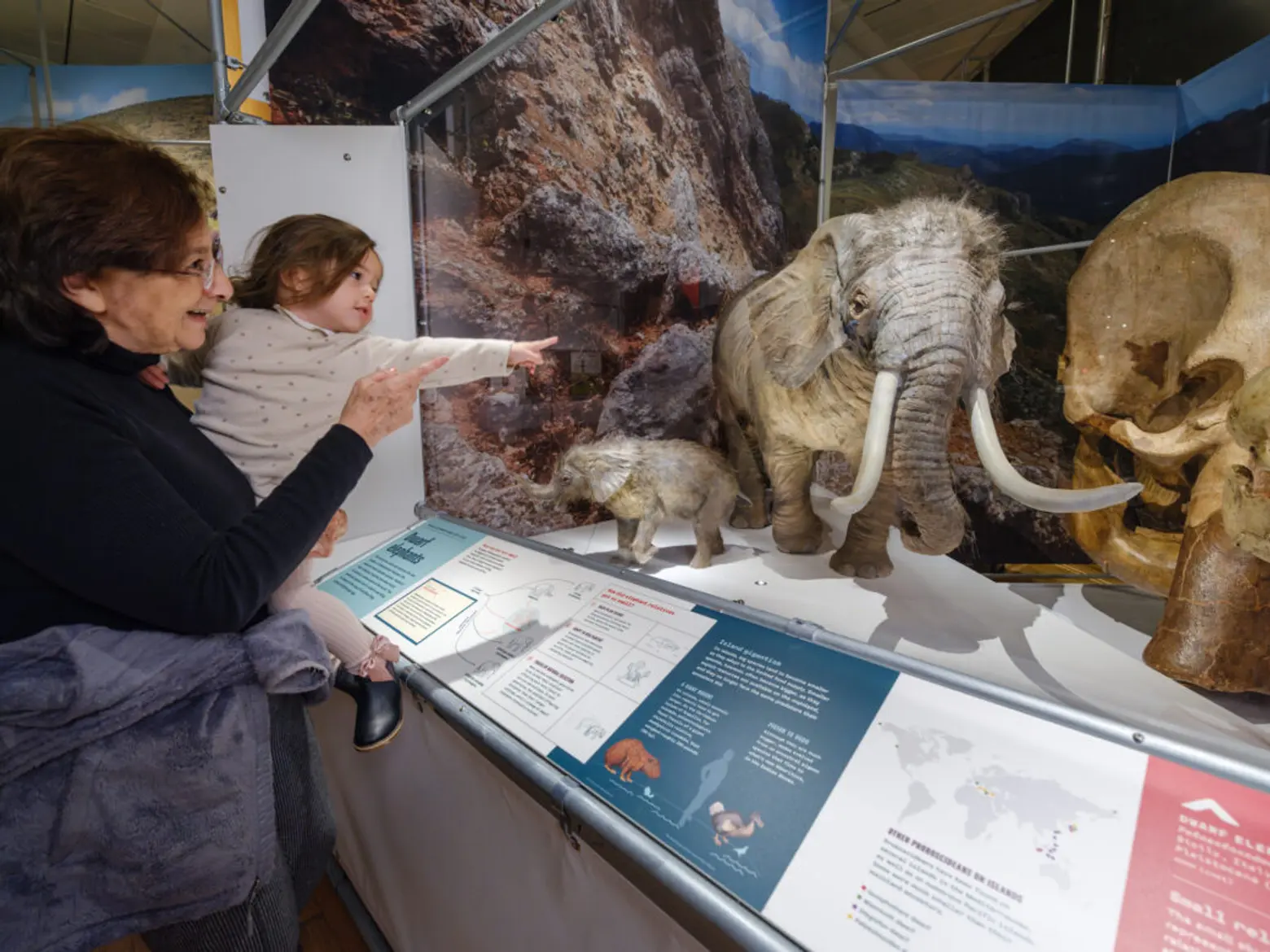
An interactive display allows visitors to turn a wheel and flap the ears of a miniature elephant model, a process that elephants use to keep themselves cool in hot environments. Finally, an exploration of elephant poop, featuring a replica of elephant dung, explains how the animal’s excrement provides essential nutrients for plants and other animals.
Next, visitors will learn about the mind of elephants, including the animal’s five different vocalizations, and learn how to “speak elephant” by observing videos of elephant communication. Guests will learn how the animals greet, court, play, and mourn for one another.
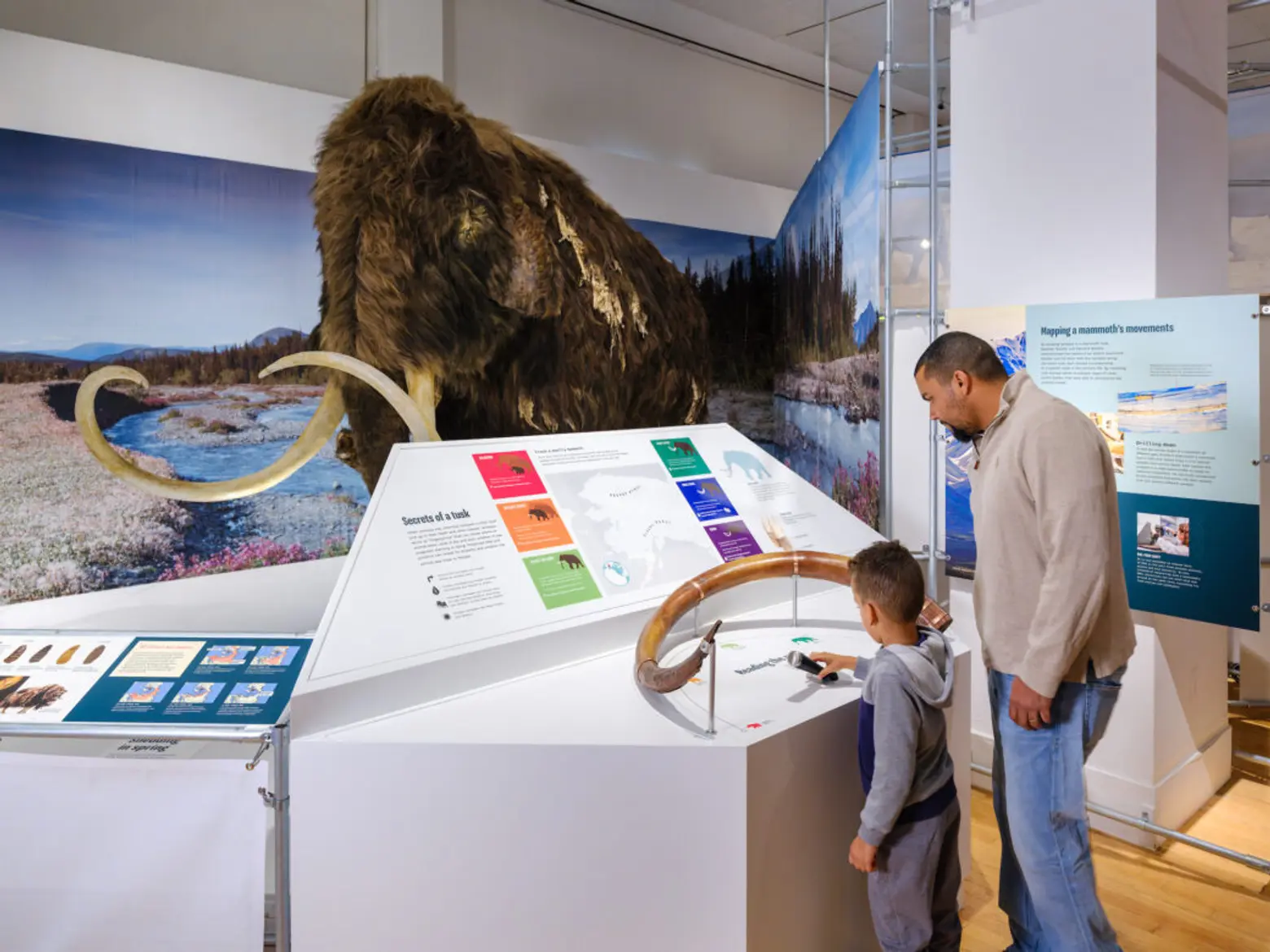
An interactive mammoth tusk model shares ways that scientists use isotope “fingerprints” to discover how mammoths traveled across what is now Alaska roughly 17,000 years ago.
The exhibition also dives into elephants’ interesting relationship with humans, one that has grown over thousands of years. While never having been truly domesticated, the animals have long been used for work and war.
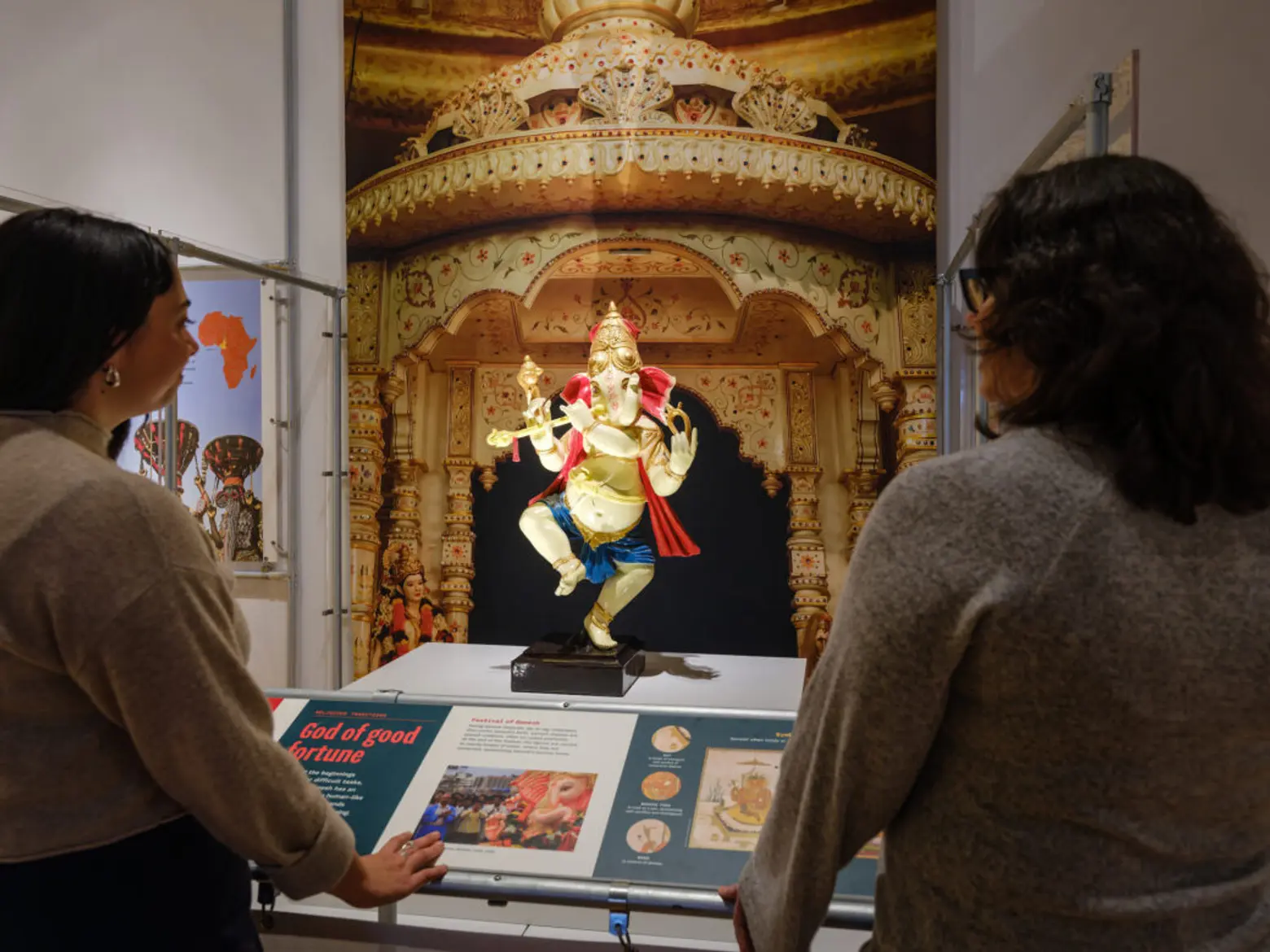
Cultural artifacts on display throughout the exhibit illustrate this ancient connection, including puppets from Vietnam that depict the Tru’ng sisters, national heroes that are said to have rode elephants into war 2,000 years ago against a Chinese army, and a large figure of the Hindu god Ganesh, who has an elephant’s head and a human-like body.
“We are delighted to present ‘The Secret World of Elephants’, a comprehensive look at these intriguing and important animals and the latest scientific thinking about their abilities, environmental roles, social structure, history, and future,” Sean M. Decatur, President of the AMNH, said.
“This exhibition is an example of what the American Museum of Natural History does so well: by starting at a point of shared curiosity and fascination we can share larger stories about evolution, the environment, animal behavior, and the interactions between human and animals, thereby expanding understanding of the natural world and our impact on it.”
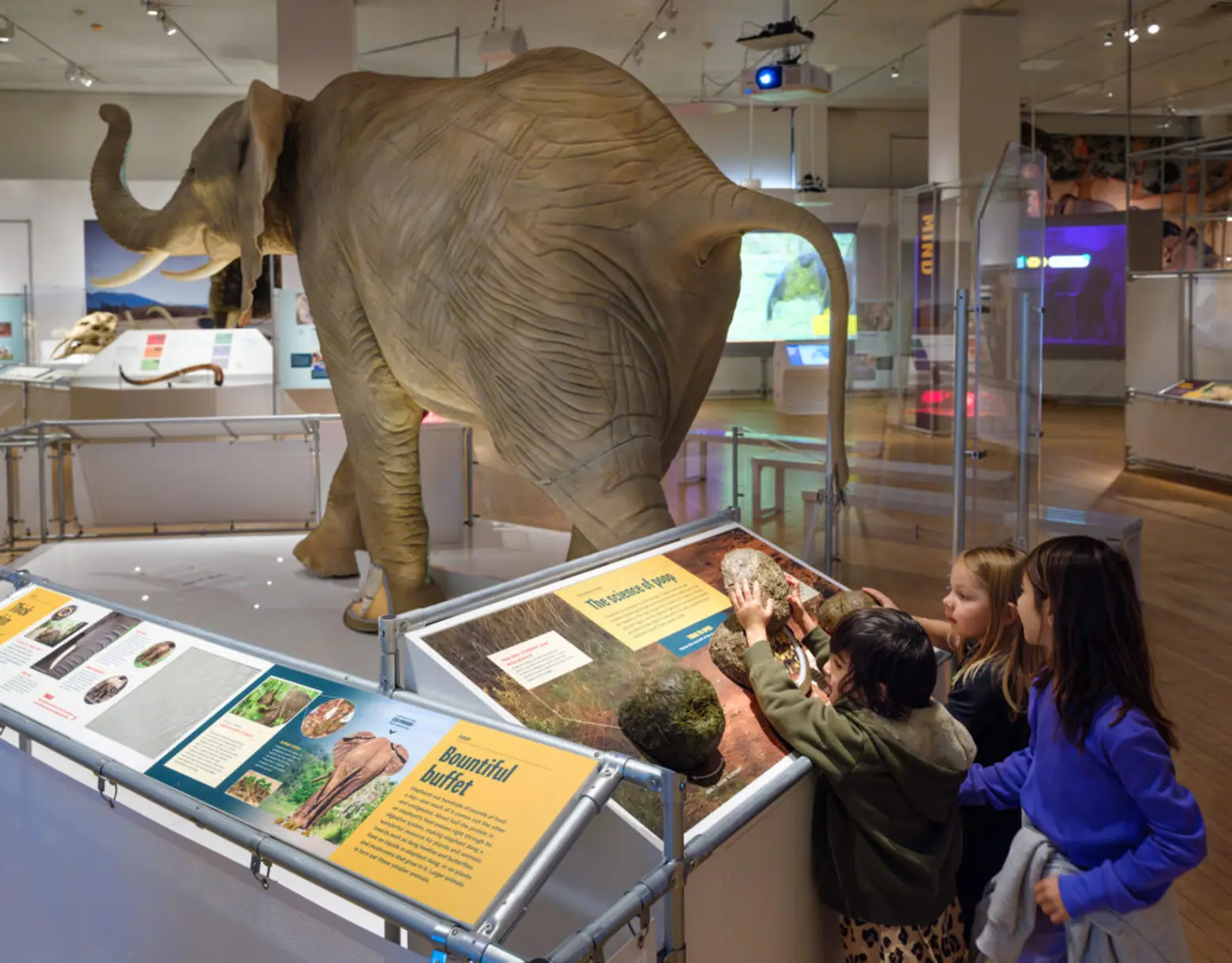
“The Secret World of Elephants” is curated by Ross MacPhee, curator emeritus in the AMNH’s Department of Mammology, with consultation by Raman Sukumar, honorary professor at the Centre for Ecological Sciences, Indian Institute of Science, and Alexandra van der Greer, a researcher at the University of Leiden, Netherlands.
The exhibition is designed and produced by the AMNH’s award-winning Exhibition Department under the guidance of Lauri Halderman, senior vice president for exhibition.
Tickets start at $28 for adults, $16.50 for children, and $22.50 for seniors and students. AMNH members can see the exhibition for free during every visit.
Tickets must be reserved in advance here.
RELATED:
